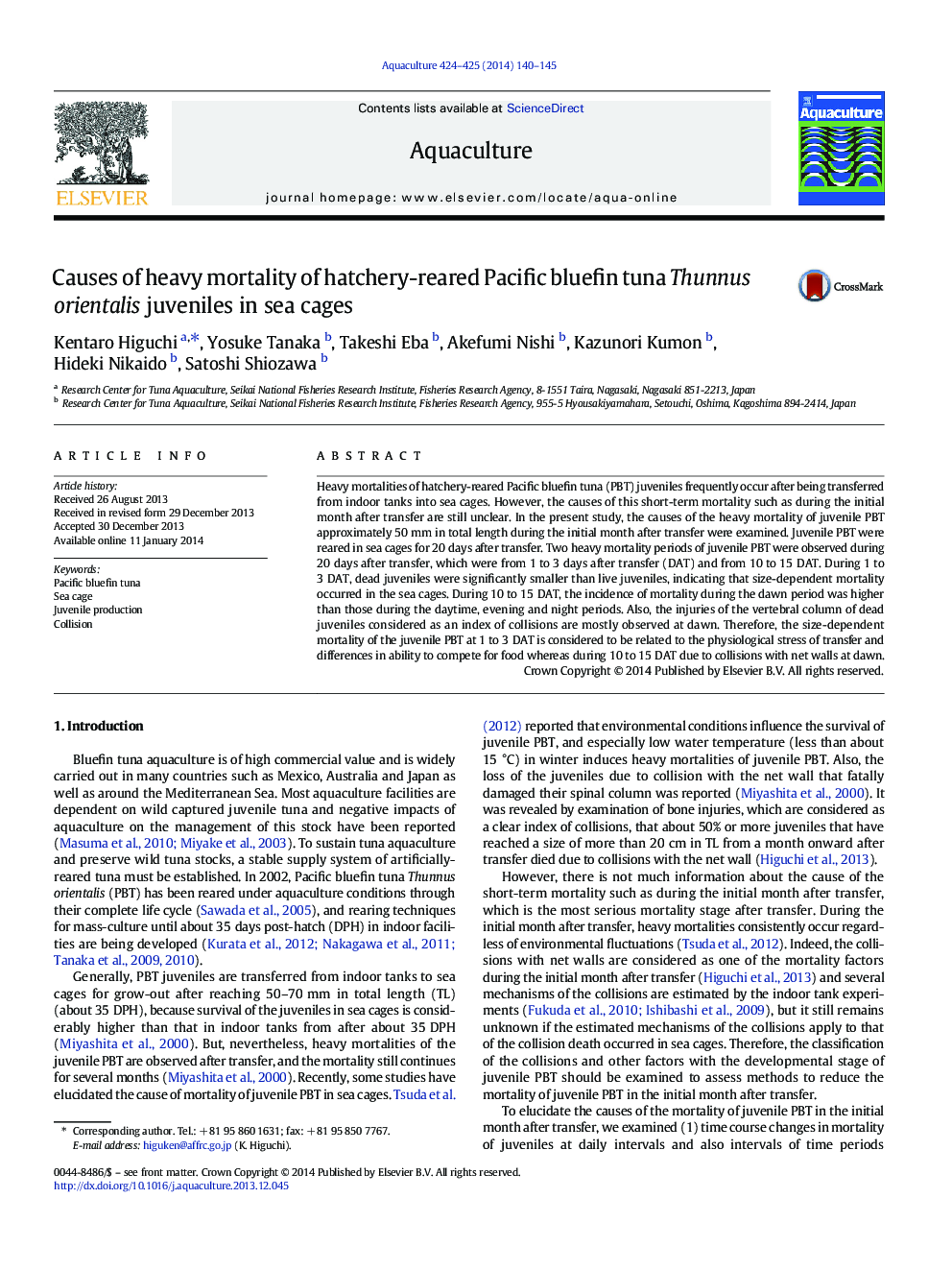| Article ID | Journal | Published Year | Pages | File Type |
|---|---|---|---|---|
| 8495270 | Aquaculture | 2014 | 6 Pages |
Abstract
Heavy mortalities of hatchery-reared Pacific bluefin tuna (PBT) juveniles frequently occur after being transferred from indoor tanks into sea cages. However, the causes of this short-term mortality such as during the initial month after transfer are still unclear. In the present study, the causes of the heavy mortality of juvenile PBT approximately 50Â mm in total length during the initial month after transfer were examined. Juvenile PBT were reared in sea cages for 20Â days after transfer. Two heavy mortality periods of juvenile PBT were observed during 20Â days after transfer, which were from 1 to 3Â days after transfer (DAT) and from 10 to 15Â DAT. During 1 to 3Â DAT, dead juveniles were significantly smaller than live juveniles, indicating that size-dependent mortality occurred in the sea cages. During 10 to 15Â DAT, the incidence of mortality during the dawn period was higher than those during the daytime, evening and night periods. Also, the injuries of the vertebral column of dead juveniles considered as an index of collisions are mostly observed at dawn. Therefore, the size-dependent mortality of the juvenile PBT at 1 to 3Â DAT is considered to be related to the physiological stress of transfer and differences in ability to compete for food whereas during 10 to 15Â DAT due to collisions with net walls at dawn.
Related Topics
Life Sciences
Agricultural and Biological Sciences
Aquatic Science
Authors
Kentaro Higuchi, Yosuke Tanaka, Takeshi Eba, Akefumi Nishi, Kazunori Kumon, Hideki Nikaido, Satoshi Shiozawa,
